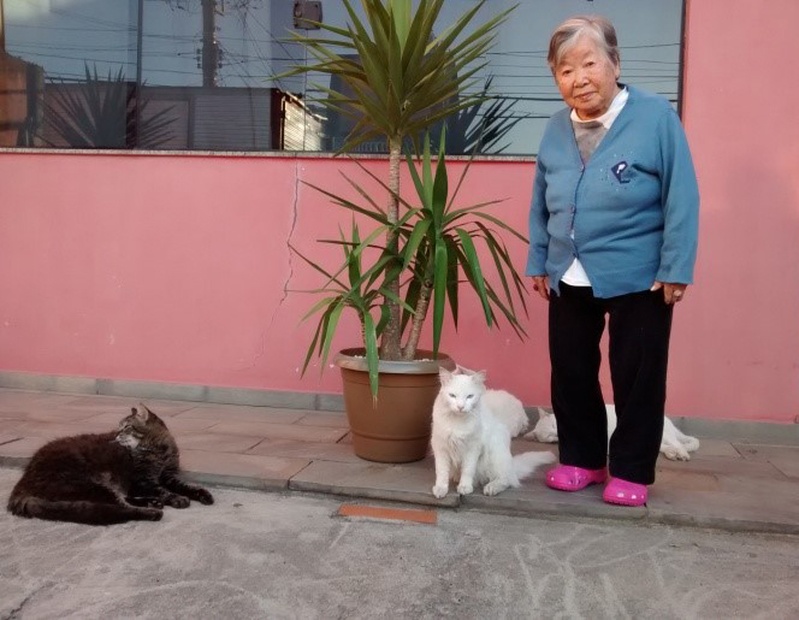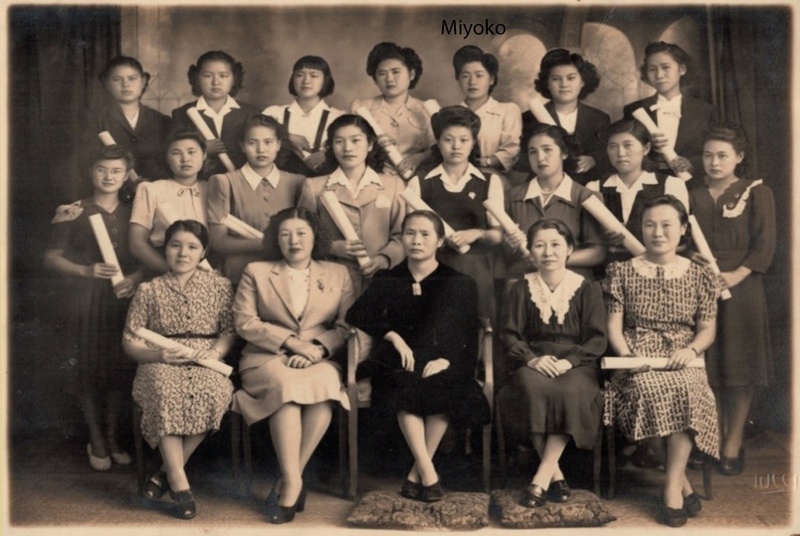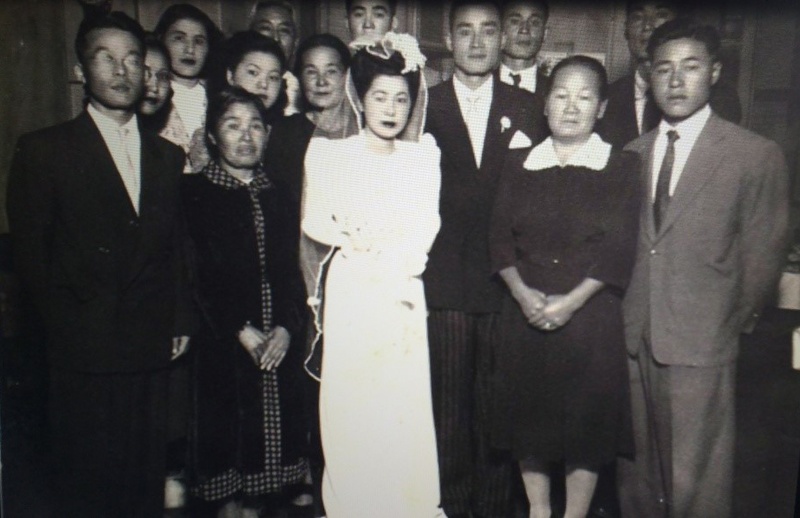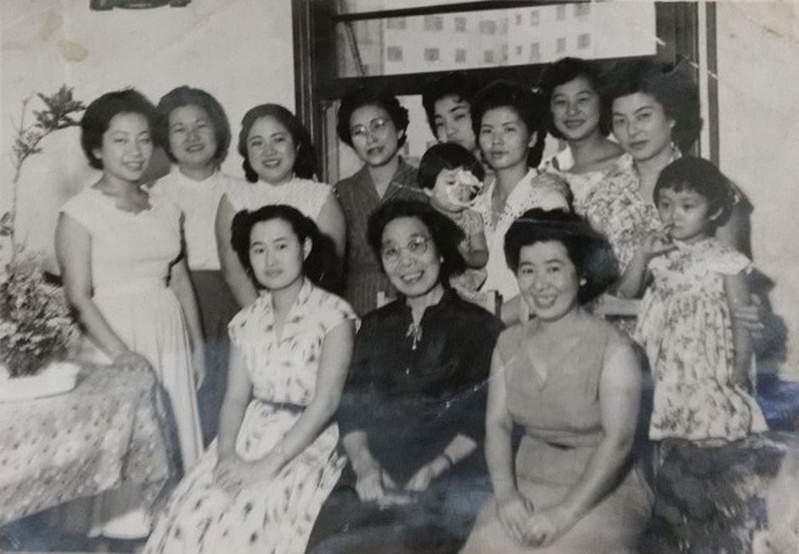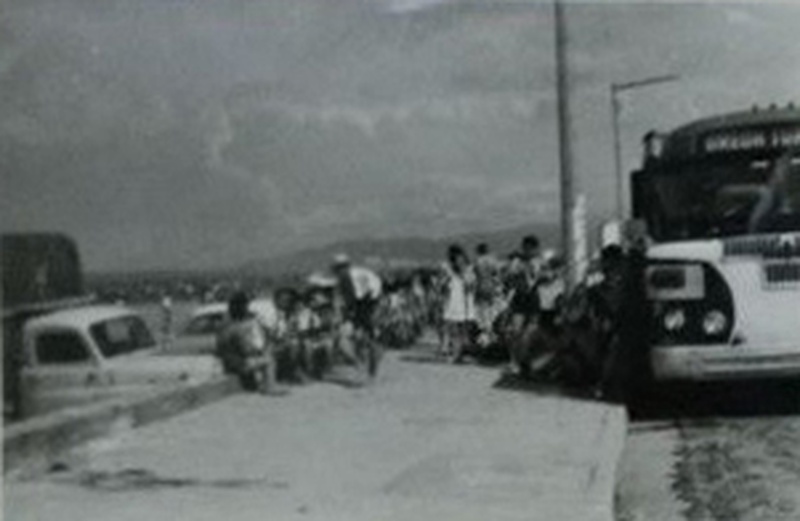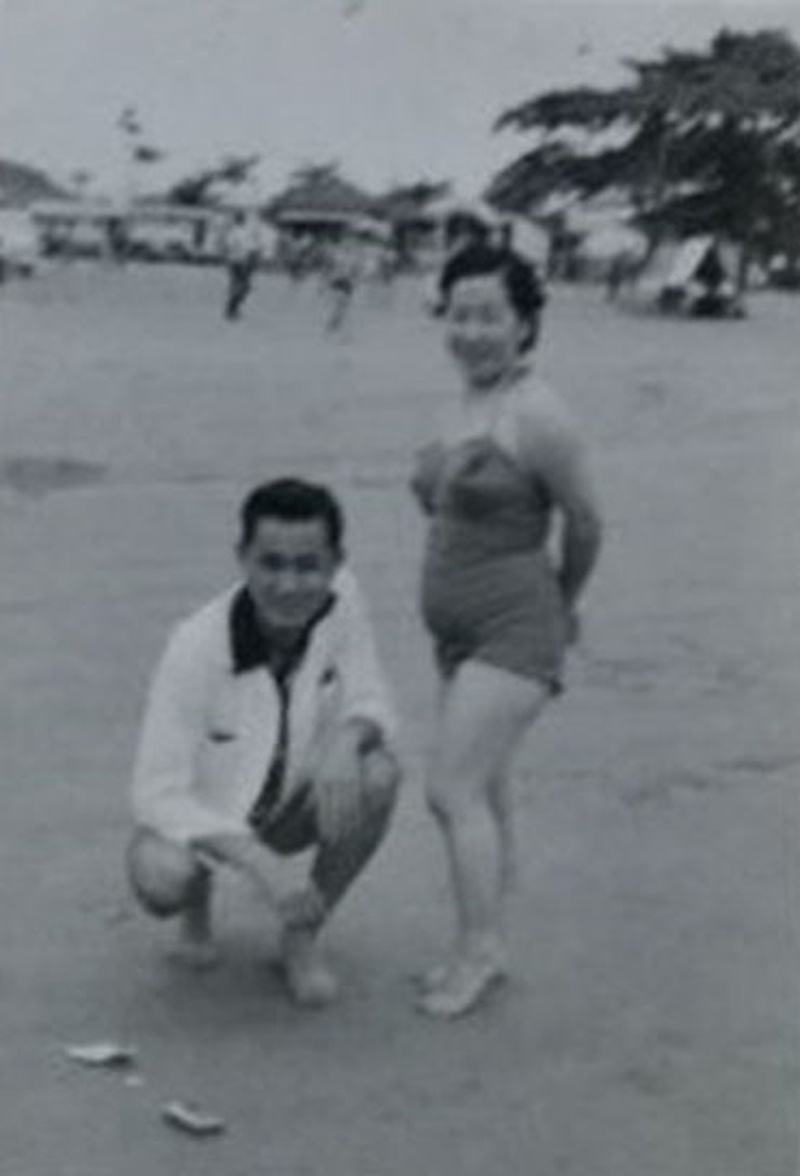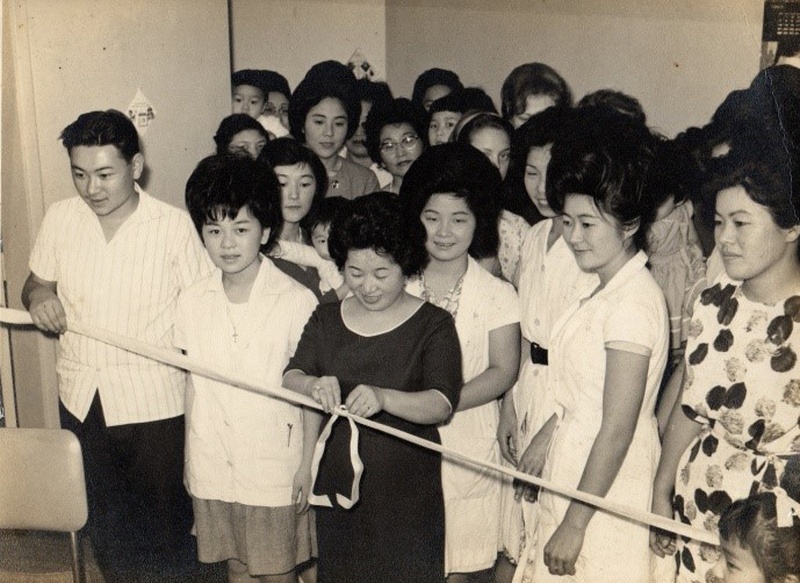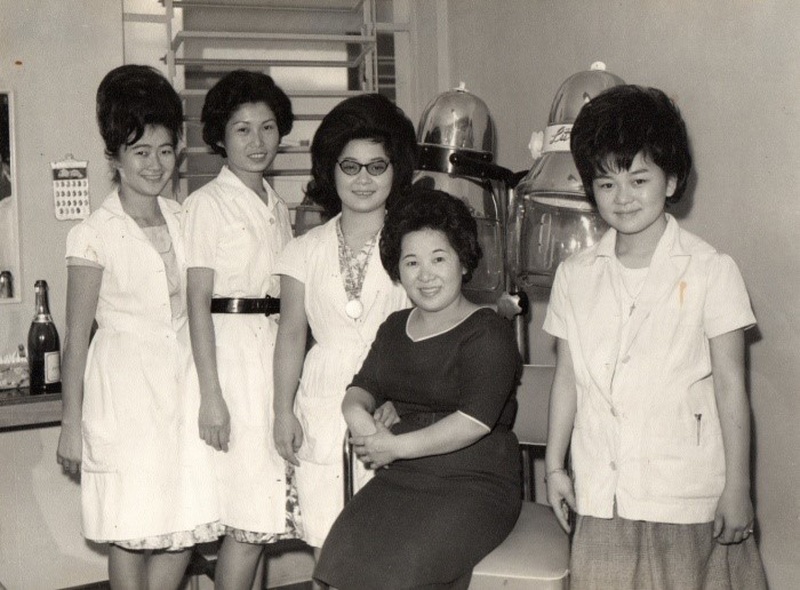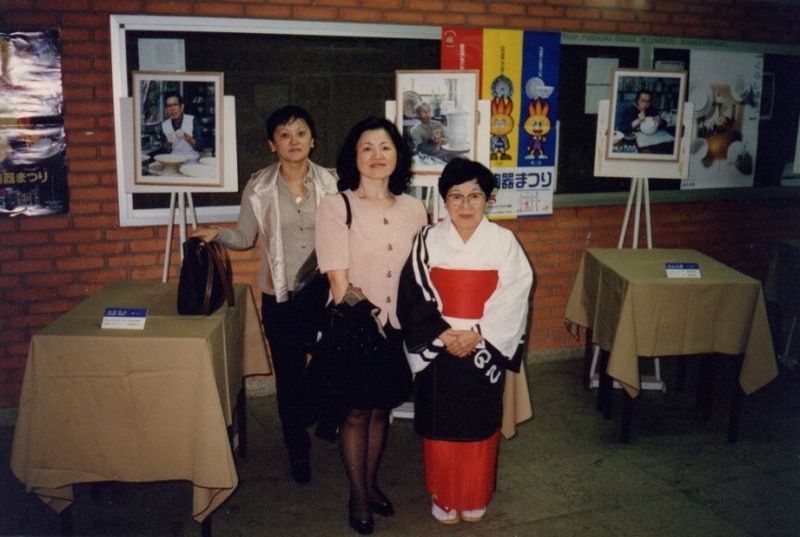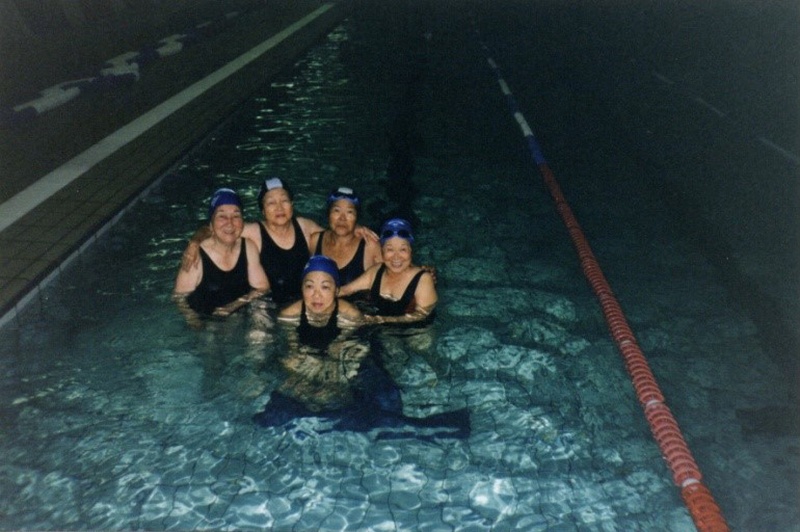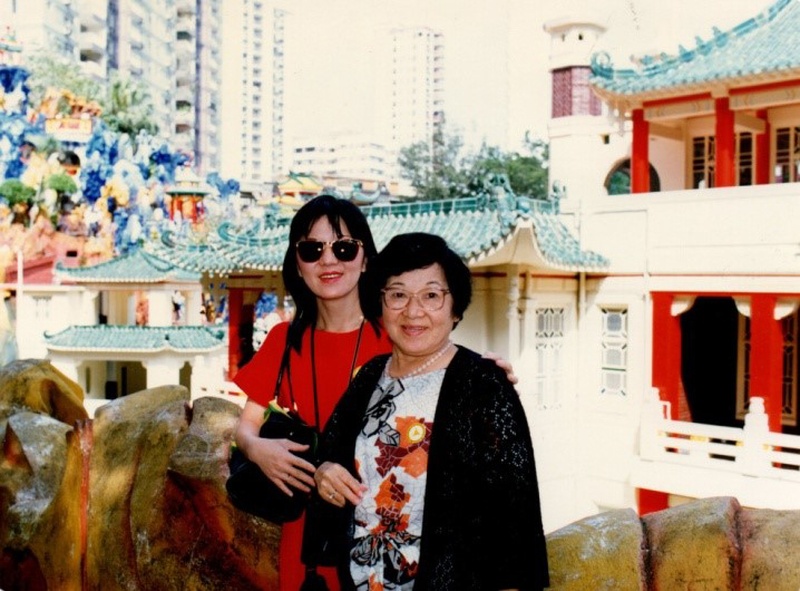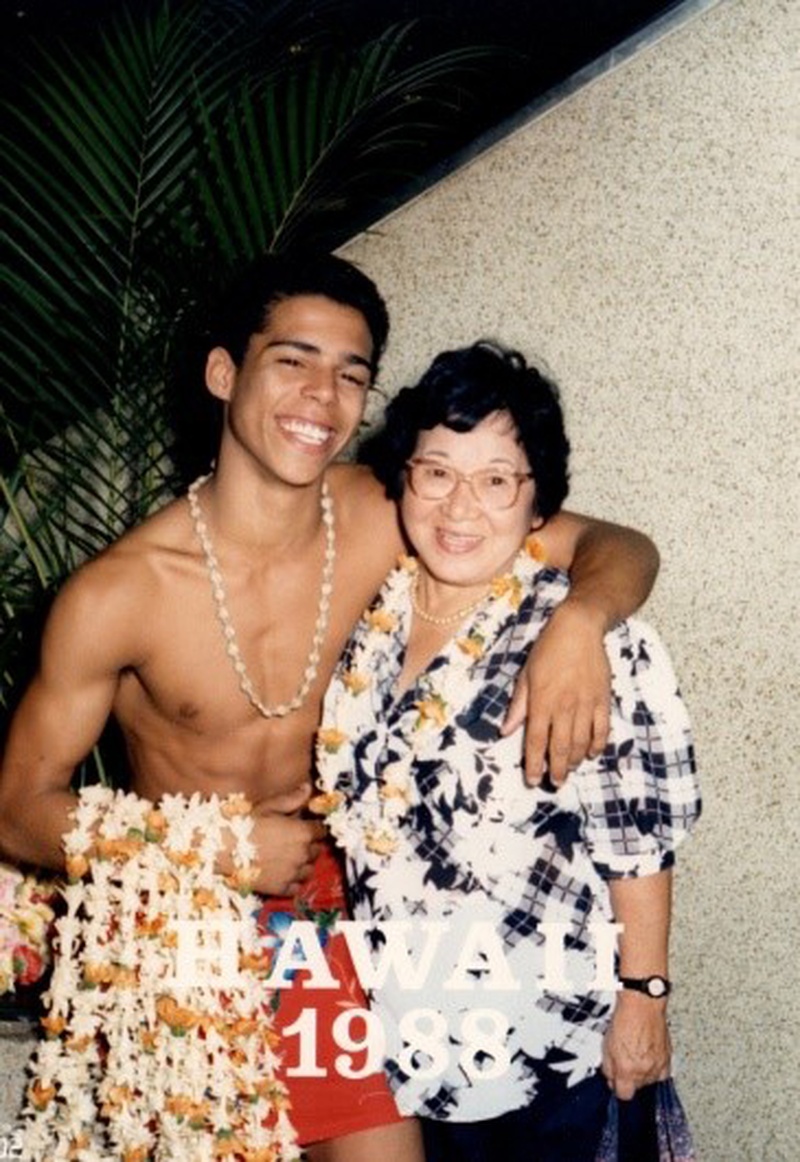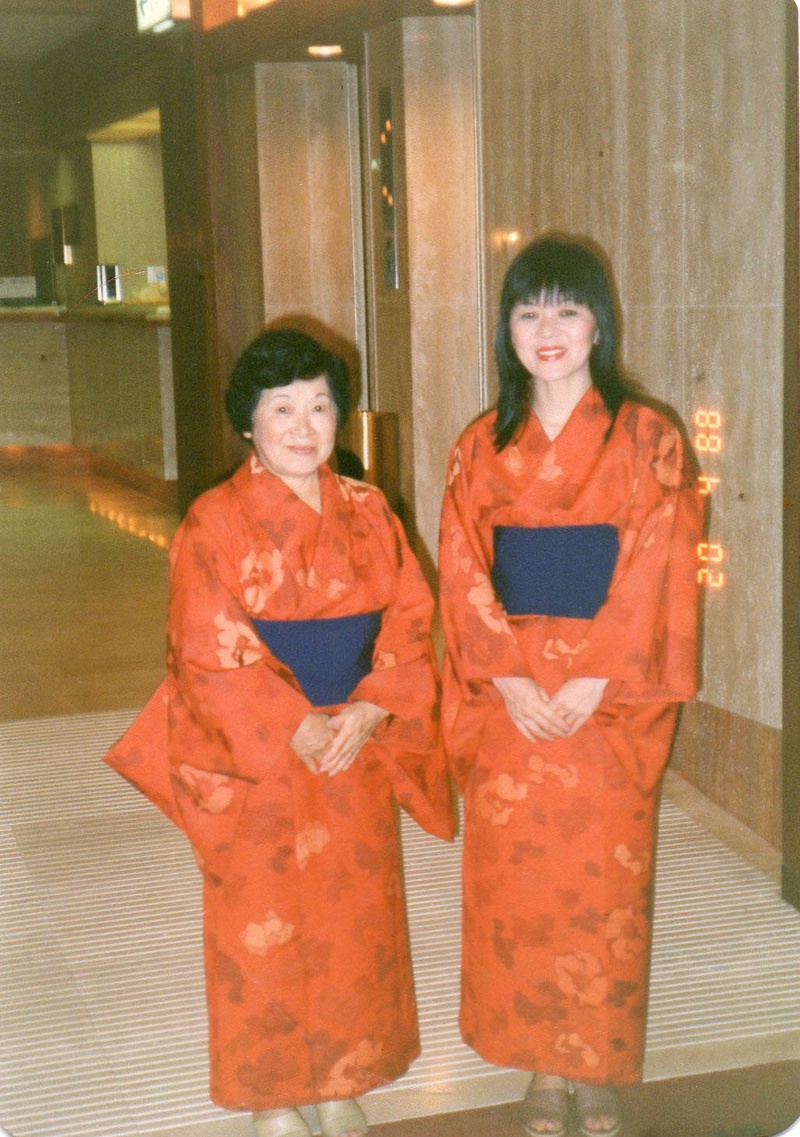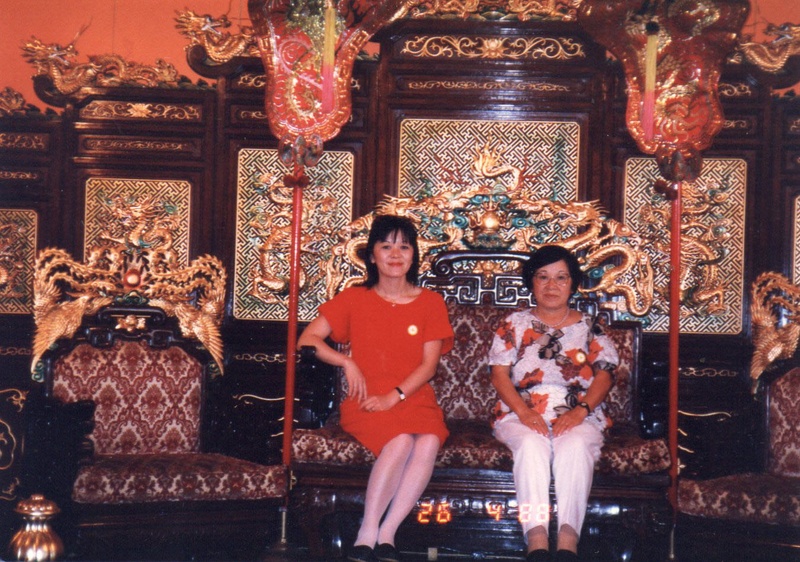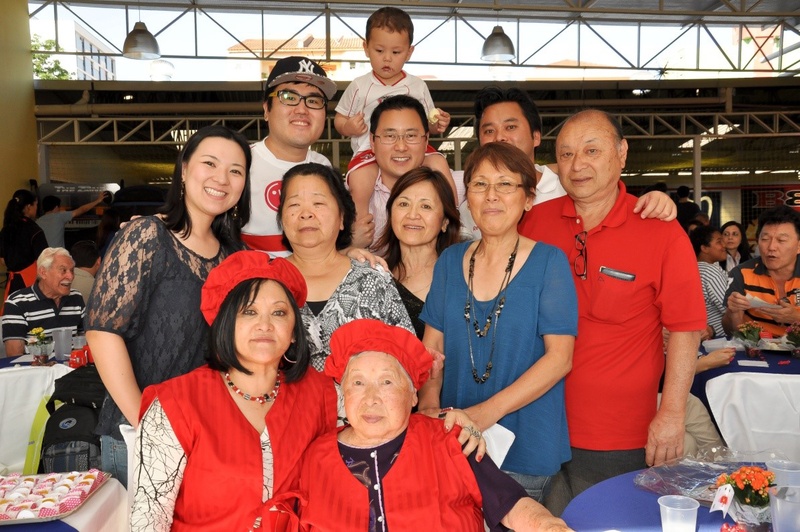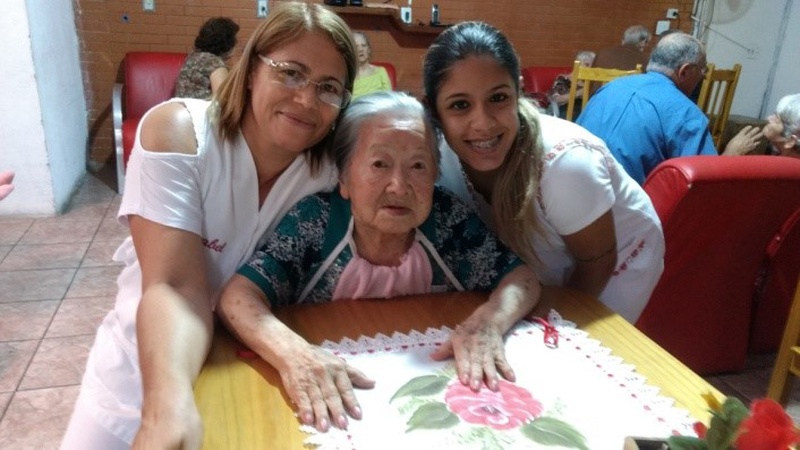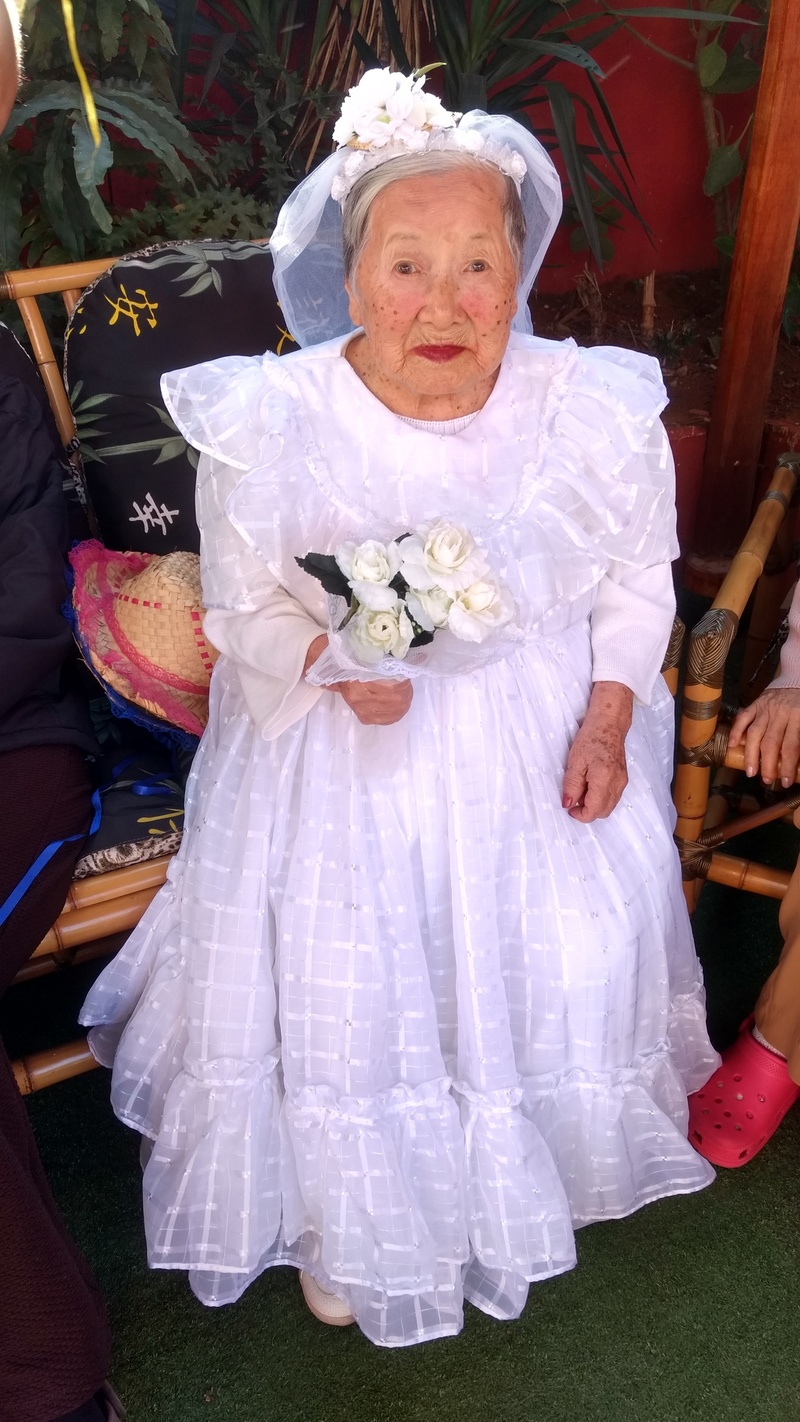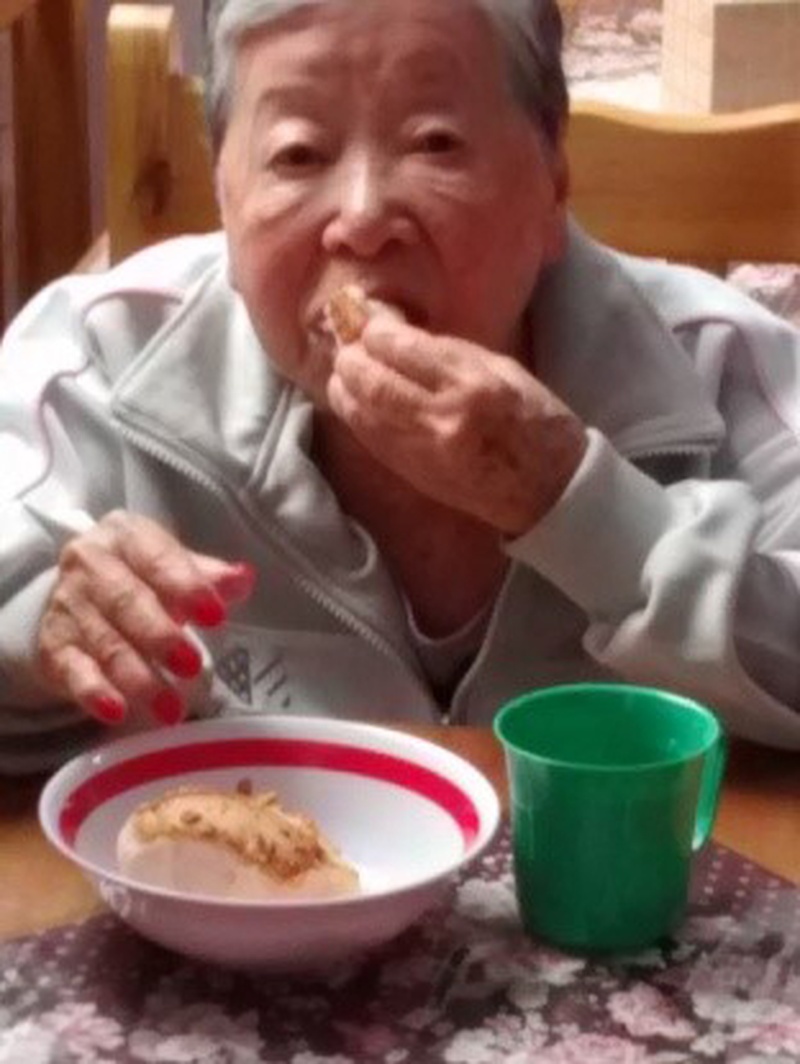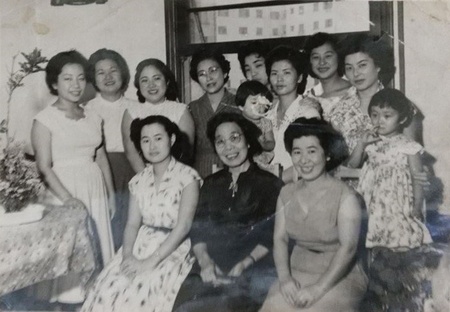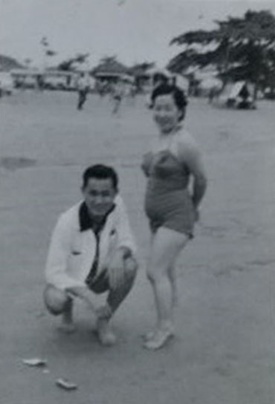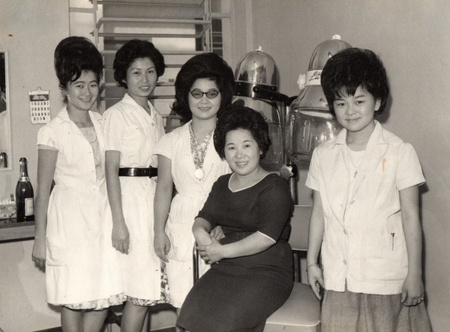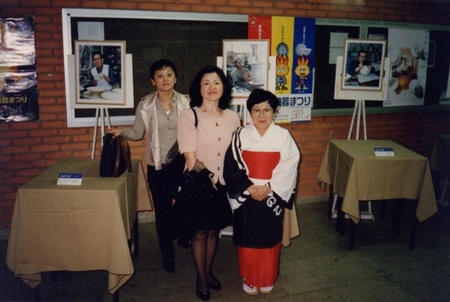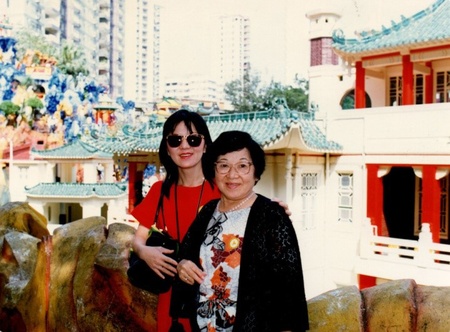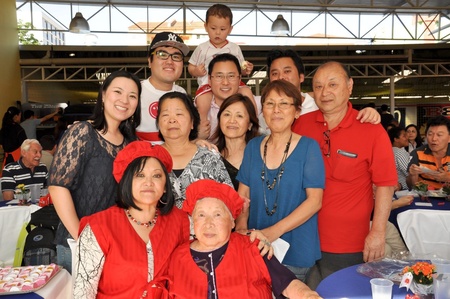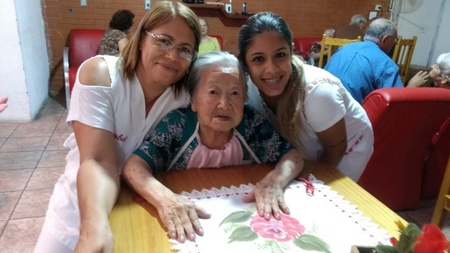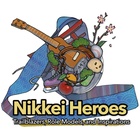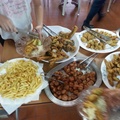Miyoko Fujisaka was born in Osaka on September 24, 1924. The third daughter of Sadakichi and Kuri Kawauchi, she came with her family to Brazil, aboard the ship La Plata Maru, arriving at the port of Santos on January 9, 1933.
The family was then sent to work on a farm in the northwestern region of the state of São Paulo, where they planted and harvested coffee and cotton.
While her parents and two brothers worked in the fields, the girl Miyoko stayed at home, taking care of her little sister and doing the housework.
In 1941, following the death of her husband, Miyoko’s mother moved with her children to the city of São Paulo.
Miyoko attended elementary school at the Campos Sales State School in the Liberdade neighborhood, later attending the girls’ school of teacher Michie Akama, where she took classes in Culinary Arts, Dressmaking, Japanese, and Portuguese, and participated in artistic and cultural activities like music, painting, tanka (poetry), ikebana, and origami. Back in those days, the opportunity to attend this school was a dream and a privilege for a select few.
At age 22, she married Masaru Fujisaka. They had four children: Luiz Takayasu (1946), Amália Masami (1948), Noemia Kiyomi (1950), and Iraci Megumi (1952).
Masaru was the owner of an egg warehouse on Carlos de Souza Nazareth Street, in the Mercado district. He used to travel by truck in search of egg crates in farms in the hinterlands of São Paulo State.
When their youngest daughter was 1 year and 8 months old, Masaru died at the tender age of 37 while Miyoko, a widow at age 29, decided to open a boarding house to support herself and her four young children.
Thanks to the cash assistance (koden) from friends and relatives, Miyoko bought a large pressure cooker, pans, plates, cutlery, and glasses to get the boarding house going.
At the time, most Nikkei lived in the countryside and those who wanted to study had to move to the state capital [of São Paulo]. That’s how she got started with eight boarders in town to attend college, providing them with packed meals for lunch and dinner.
Miyoko’s home-cooked food served at the boarding house pleased both the Brazilian and the Japanese palate and soon became well known around the neighborhood; local merchants began asking for—and Miyoko began serving—meals for non-boarders. Word of mouth led to a gradual increase in business as a result of the low price and high quality of the meals.
Miyoko became a self-service pioneer, offering lunch and dinner in that system, including shiro-gohan and abura-gohan, beans, misoshiru, tsukemono, two choices of salad, braised vegetables, legumes, Kool-Aid, and lots of dessert.
She worked hard, waking up every day at 5 a.m., preparing breakfast for the boarders —in addition to a snack or a packed meal for those who stayed out all day—stepping out to buy fruit and vegetables at the City Market on Cantareira Street, and then heading back to prepare lunch that would be served from 11 a.m. In the afternoon, she went grocery shopping at the non-perishable food co-op and at the Cereal District warehouses; upon returning home, she washed the bed sheets, table covers, and bath towels. After 5 p.m., she began preparing dinner, which would be served at 7. Following the post-dinner clean-up, she did some ironing, sewing, and dressmaking, and selected rice and beans for the next day, always going to bed after 11.
On Sundays, only lunch was served, so she could have the afternoon free to visit relatives and watch Japanese movies at the Cine Niterói, Cine Joia, Cine Tokyo, Cine Nippon.
At least once a year, she would go to Praia Grande [on the coast of São Paulo State], bringing along her family and her boarders, renting a bus that left at 6 a.m., and taking with her bento boxes, in which there was no shortage of onigiri, tsukemono, breaded dishes, boiled eggs, omelets, etc.
Throughout its 30 years in business, the boarding house was the home of young women who took courses in sewing and dressmaking, plus courses for hairdressers; of young men who attended high school and/or college. Young people left there with degrees in Medicine, Dentistry, Engineering, Law, Economics, Business Administration, etc.
Miyoko took care of all the boarders as if they were her own children, while they, with much respect and affection, called her “Tia” (Auntie, oba-san). She felt very grateful to family members who had entrusted their son or daughter to her boarding house, maintaining friendships with everyone. And thus she was able to raise her four children on her own, for, in spite of several marriage proposals, she chose to remain a widow.
In the 1960s, young women arriving from the interior of São Paulo were no longer all that interested in sewing and dressmaking courses, preferring to learn hairdressing and manicure. So Miyoko set up a beauty salon, from then on managing both the boarding house and the salon.
She had three grandsons (Newton Kenji, Daniel Kiyoshi, Rui Seiji) and one granddaughter (Elaine Mitiko), but didn’t take care of any of them because, as she always said: “I’d rather cook for 30 people every day than take care of one child.” Since the birth of her first grandchild (1976), she was the one who, on weekends, would go visit her grandchildren at her children’s home or at the home of the other grandparents, coming across as a “different” kind of grandmother. She worked so hard during the week that she would call her children only on weekends, letting them know what her plans were.
Miyoko retired at age 60. During her last five years running the boarding house, she gradually began easing her workload, initially putting an end to Sunday lunch, then to Saturday meals; in the end, she was serving only lunch from Monday to Friday.
It was only in 1985 that she began attending kenjinkai events, taking odori (Japanese dance) classes, and helping to prepare champon ryori served at the association’s get-togethers. As she had always enjoyed cooking, she was quick when washing, cleaning, peeling, and chopping vegetables, fish, and seafood.
She learned to swim at age 64 and, after turning 70, she began using the pool at the YMCA in the Consolação district, where she practiced swimming until 2006.
In 1988, she returned to Japan, where she did some traveling with her daughter Noemia and paid a visit to the home of her cousins. At that time, she also went to Los Angeles, Hawaii, and Hong Kong.
Following her daughter Noemia’s death from lung cancer in 2007, Miyoko began experiencing behavioral problems; as a consequence, her children had her undergo a battery of medical exams in the ensuing five years. She was no longer in control of her health and safety: she couldn’t cook, as at times she left the stove gas on; unaware of the proper amounts, she used too much salt and shoyu; and when she stepped out, she got lost, being unable to find her way back home.
In 2012, Miyoko’s son Luiz brought her to live with him. At the time, she was doing Radio Taiso calisthenics every morning and attended Niji no Kai every third Wednesday of the month, an event at the Holiness do Bosque Church.
Her 88th birthday in 2012 was celebrated with a big bash, as Miyoko had always wanted to observe that Japanese tradition.
Since 2013, she has been living in the Recanto dos Guerreiros nursing home, where she has 24-hour assistance, six daily meals, a physiotherapist every week, and a geriatric doctor every couple of weeks, in a cheerful and friendly environment.
Today, on the eve of her 95th birthday, she is physically well in spite of her dementia.
This is a humble tribute to our greatest heroine, our mother! Her joyful way of speaking, singing, playing, reading, writing, eating will remain forever in our hearts.
With the love and gratitude of her children Luiz, Amália, and Iraci.
* * * * *
Our Editorial Committee selected this article as one of her favorite Nikkei Heroes: Trailblazers, Role Models, and Inspirations stories. Here is the comment.
Comment by Andre Kondo
The definition of a hero is generally attributed to fictional characters, some gifted with superpowers, or to a person that saves another under in peril. The three submitted stories in Portuguese do not follow such stereotypes, focusing on the lives of seemingly common people. However, precisely because of that, the texts become interesting, for showing that just living with dignity already can be considered as a heroic act.
Each text has its own quality, but the select one of this edition is from Iraci Megumi Nagoshi, which tells the story of Miyoko Fujisaka’s life. The biographical text is based on a well-constructed timeline, that could be expanded into a full book, taking into account that, in general lines, the material is rich and interesting. Iraci did not use lyrical juggling with words, presenting an objective text. Even so, the story is touching, precisely for presenting Miyoko’s life as more natural as possible, with the emotion residing in the day-to-day life of this woman.
Moreover, in this story, the typical difficulties of the heroic narratives are not specifically related to Isseis, but also to immigrants from other nationalities, raising universal empathy during the reading. At a young age, Miyoko becomes a widow, with four children to raise. From that point, we accompany this young mother’s strength, that goes on living with inspiring determination. It should be noted that in a time when being a woman involved higher difficulties than nowadays, winning over all that entitles Mrs. Fujisaka to be considered a true hero.
© 2019 Iraci Megumi Nagoshi


